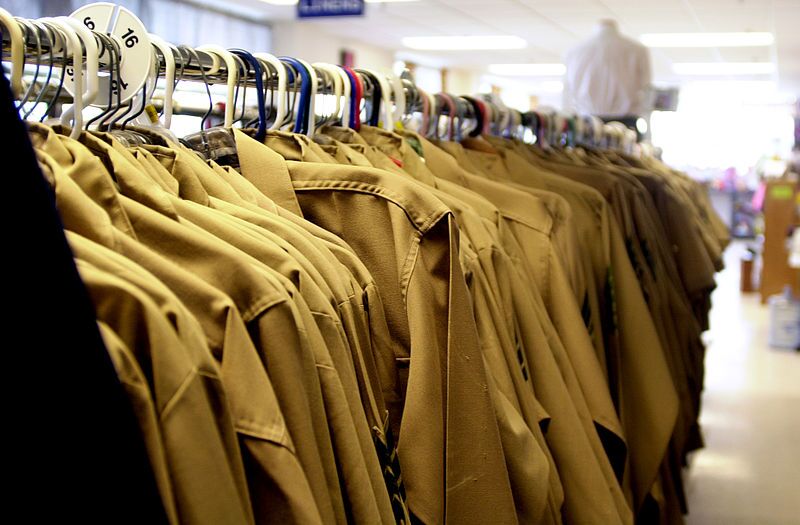Art of Thrifting
Second-hand stores create new buzz among teens
Thrift stores have been swarming with Starbucks-sipping hipsters enthralled by the hunt for cheap clothes, or better yet, a true vintage master piece. Renewed interested in this kind of shopping – or as some call it, “thrifting” – has become especially apparent amongst members of the student body.
“I think it’s a good way to get cheap clothes,” sophomore Logan Hunter said. “I don’t do it myself, but I like the idea.”
A general thrift store consists of clothing, furniture and household items, each with varying levels of use – some being unused or lightly worn. Inside thrift stores, columns of metal racks separated by clothing type line the shop, typically stuffed to the brim with donations from local residents. For some shoppers, the secondhand aspect of the clothing can deter them.
“For me, thrift stores are not a good idea,” freshman Valeria Gonzales said. “I don’t like the idea of wearing someone’s used clothes.”
While the donations made to thrift stores keep prices low and raise money for charity, the inventory lacks consistency, as it all depends on what locals drop off. The donations are sorted and the ones that pass the condition standard are sent to the storefront.
“I think thrift stores can be helpful when it comes to donating clothes,” senior Isabella Mena said. “I’ve shopped in a few thrift stores before, but out of all of them I’d say Sunshine has been my favorite.”
In addition to their dependency on donations for clothing and furniture, the majority of thrift stores also depend on volunteers to help run the shop. Students have been further utilizing thrift stores as an opportunity to obtain service hours.
“Over the summer I had the chance to work in a thrift store,” junior Caroline Baird said. “It was really cool to help out and get service hours.”
While some teens may have just discovered the activity of thrifting, others have known about these institutions for years. Donating and supplying clothes for those who can’t afford them is more than just a trend.
“I think it’s a great way to supply clothes,” AP Biology and Honors Gifted Chemistry teacher Kurt Thoreson said. “Especially for those who can’t afford Nordstrom.”



Julia W. • Oct 2, 2018 at 10:14 am
I have noticed myself that prices for clothes at thrift stores have gone up due to the fact that thrifting has become a more popular hobby. Especially in cities, stores hand pick through clothes they deem “vintage” and then boost the price of the used clothes. This isn’t true for every store, but it’s something I’ve noticed.